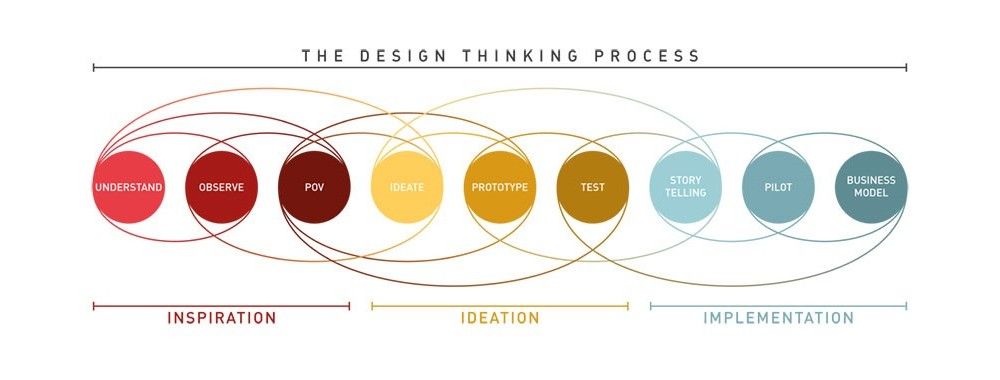Table Of Content

For more than a decade, manufacturers have used a design-to-value (DTV) model to design and release products that have the features needed to be competitive at a low cost. During this time, DTV efforts were groundbreaking because they were based on data rather than experience. They also reached across functions, in contrast to the typical value-engineering approach. McKinsey analysis has found that some industries—such as telecommunications, automotive, and consumer product companies—have already made strides toward combining product and service into a unified customer experience. Read on for concrete examples of how companies have applied design thinking to offer innovative—and lucrative—customer experiences.
Templates for the Define stage
The ultimate goal is to get as deep an understanding of the product and its users as possible. In 2013, IBM started to build a design-driven culture at the largest scale ever, in a company with more than 385,000 employees. The project took three years, involved more than 750 designers, and affected over 10,000 employees and hundreds of teams.

Prototype
Design thinking: All you need to know - YourStory
Design thinking: All you need to know.
Posted: Fri, 06 Oct 2023 07:00:00 GMT [source]
Understanding that pain points vary between geographic locations helps UberEats implement effective upgrades to its service that solve problems in specific locations. Their first recommendation was to make the toothbrush easier to charge, especially while users were on the road. Another was making it more convenient for users to order replacement heads by allowing toothbrushes to connect to phones and send reminder notifications. Both proposals were successful because they focused on what users wanted rather than what the company wanted to roll out.
In business
And most critically, design thinking keeps people at the center of every process. A human-centered designer knows that as long as you stay focused on the people you're designing for—and listen to them directly—you can arrive at optimal solutions that meet their needs. Professor Klebahn agrees, drawing on an example of a friend who revolutionized exercise equipment using design thinking. While competitors in his industry were fighting for market share, this friend went and sat at a gym, taking note of people’s emotions when using the machines.
Learn More about Design Thinking
IT professionals increasingly need to navigate projects arising from greater business complexity. The integration of systems models with established methodologies, like design thinking, agile and lean, presents a unique opportunity for IT experts to enhance their capacity and expertise. This systemic integration not only enriches their problem-solving tool kits but also ensures the delivery of innovative, sustainable solutions that align with the strategic objectives of their organizations. After three years of development, IBM released its design thinking model with the goal of overcoming the traditional model’s adoption barriers for large companies. IBM’s design thinking model puts the consumer in the heart of the development process, which is known as the Loop. The Loop principles and techniques provide a practical approach to how to solve complex project problems with the consumer in mind, regardless of the size of the problem, the project, or the number of stakeholders.
What are the 5 Stages of the Design Thinking Process
Give yourself and your team total freedom; no idea is too farfetched and quantity supersedes quality. Design Thinking is a driving force in business that matches its status as a popular subject at leading international universities. Using Design Thinking, teams can generate great insights and apply hands-on methods to find innovative answers.
Related UX Design Articles
Jakob Nielsen says “a wonderful interface solving the wrong problem will fail." Design thinking unfetters creative energies and focuses them on the right problem. This is the most important part of design thinking, but it is the one most often forgotten. As Don Norman preaches, “we need more design doing.” Design thinking does not free you from the actual design doing. Ensure that your solution is materialized and touches the lives of your end users. Combine all your research and observe where your users’ problems exist.

Common challenges in design thinking
You’ll analyze your observations to define the core problems you and your team have identified up to this point. Defining the problem and problem statement must be done in a human-centered manner. Within the Design Thinking phases, there are opportunities to embed systems thinking models. For example, during the Ideate phase, using causal loops would help clarify the Theory of Success. As I wrote in my last post, Design Thinking is methodology as a way to innovate and it has different models from different organizations and schools.
Want to learn more about design thinking?
The majority of our users are adult learners who are juggling online study with full-time work, and so one of the biggest challenges they face is time management. Based on the design thinking framework, we conducted extensive user research, including an in-house time management workshop with real students. With these new insights, we redesigned certain aspects of our e-learning dashboard—such as how project milestones are displayed, for example. In true design thinking fashion, we’ll continue to gather user feedback in order to iterate on and improve our current solution. Another increasingly popular method of applying design thinking is through design thinking workshops. Design thinking workshops are also used to teach non-design professionals how to innovate and find creative solutions—an essential skill in any area of business.
HCD has a much narrower focus and aims to create and improve products. Systems thinking looks at the larger picture and aims to change entire systems. To keep up with recent developments in design thinking, read IDEO CEO Tim Brown’s blog. The key mindsets that ensure a team can successfully implement design thinking are.
In the fourth stage of the Design Thinking process, you’ll turn your ideas from stage three into prototypes. A prototype is essentially a scaled-down version of a product or feature—be it a simple paper model or a more interactive digital representation. The Design Thinking process puts the needs and requirements of the user first. The first stage of the process is dedicated to building empathy with your target users and understanding their needs, expectations, and behaviors. As a designer, you might invite your colleagues from other departments to harness a diversity of ideas. Design Thinking workshops aren’t just for designers, though; all teams can use and benefit from this creative approach to problem-solving.
Over the course of 20 years, I've had the privilege of working with esteemed clients such as the UN, World Bank, Adobe, and Schneider, contributing to their design strategies. For more than 12 years, I collaborated closely with the Adobe team, playing a key role in the development of many Adobe applications. IDEO has also developed contextualized toolkits, which repackage the design thinking process.
For developers, defining these outcomes provides a clear direction for the project, facilitating prioritization and helping to maintain focus on delivering value to the end-users. The Levels of Perspective Systems Model categorizes viewpoints from which a system can be analyzed, ranging from concrete events to deep-rooted structures and mental models. This hierarchical framework includes the Events level, Patterns of Behavior level, Structural level and, sometimes, the Mental Models level. Each level offers a unique lens through which IT developers can understand and address complex challenges. Particularly early in a design project, ideation is about pushing for a widest possible range of ideas from which you can select, not simply finding a single, best solution. Frog make it clear these stages form a non-linear process, and you might have to revisit stages multiple times during a project—particularly the clarification stage.
Our capacity for innovation—the ability to conceive ideas which are at once actionable and effective—is what gives us the upper hand in competitive industries. In addition, jobs that require design thinking statistically have higher salaries. Marketing manager job postings that require design thinking skills, however, have a median annual salary of $133,900—a 24 percent increase.
While clarifying the problem, however, Colin and Hecht pointed out that brushing teeth was a neurotic act for many people. Users didn’t want additional functionality and, in many cases, thought it could potentially cause more stress. Instead, they recommended two solutions that could improve user experience without adding gimmicks. Here are some examples of how companies use design thinking, for many types of creative projects.

No comments:
Post a Comment